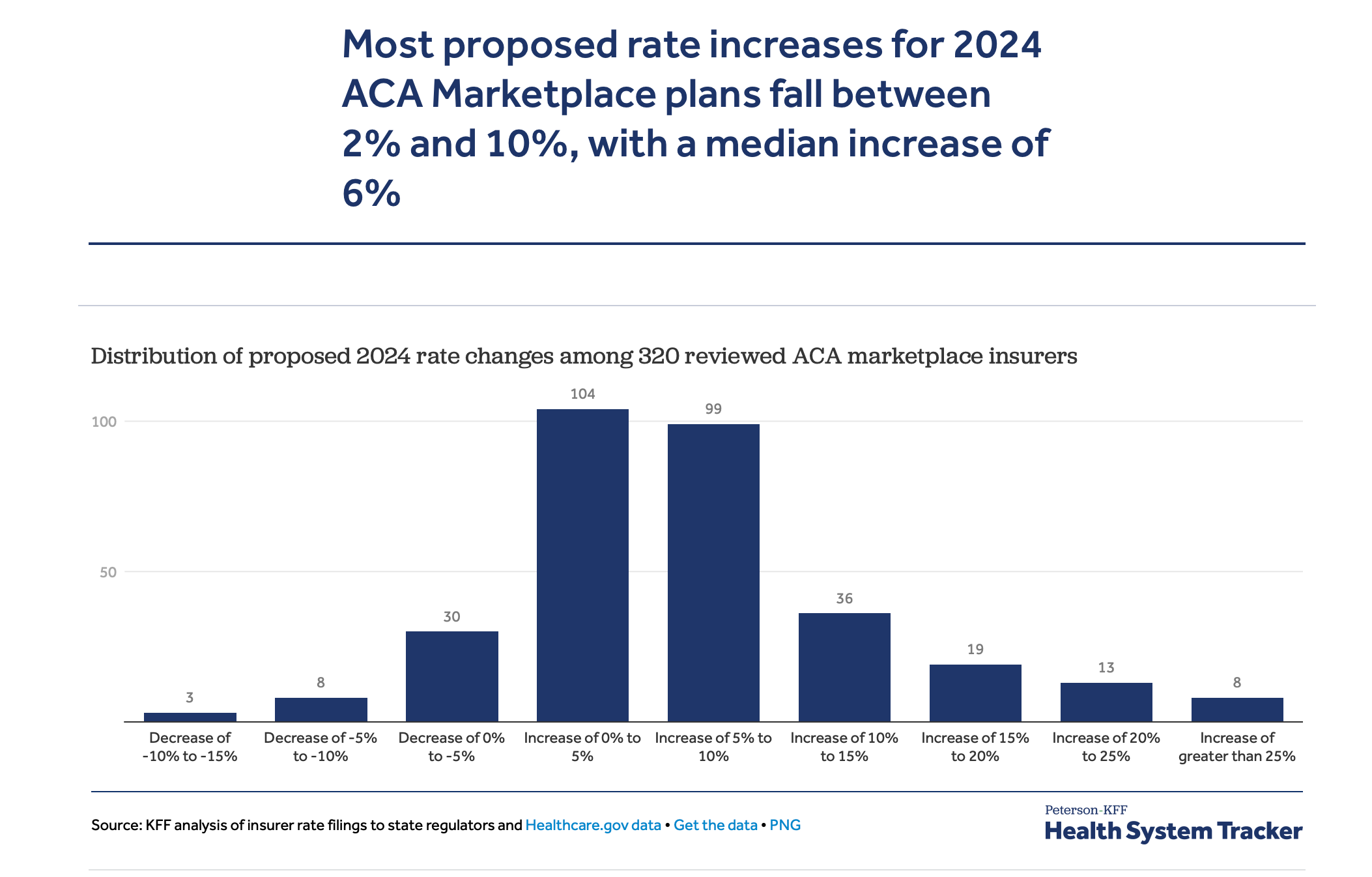How Much Is Individual Health Insurance? Updated for 2024
The average individual premiums in 2024 for the U.S. is $456. depending on multiple factors. Your insurance plan varies by metal tier and plan type. Millions of people are without insurance or pay out of pocket for healthcare services, so obtaining a plan from the Marketplace can be an excellent option for many. There is a federal Marketplace, but many states also offer their individual health insurance.
Recent analysis found that insurance premiums are expected to increase an average of 6% (again) for 2024. Researchers cited three main factors that drive premium increase: inflaiton, end of COVID-19 related Public Health Emergency, and unwindling Medicaid enrollment.
An alternative to individual health insurance plans is health memberships such as Mira. If you are struggling to find affordable yet high-quality health coverage, you may want to consider Mira. For as little as $45 a month, Mira members get access to low-cost virtual and urgent care, up to 80 percent off select medications, and same-day lab testing. Sign up for Mira today and get covered today!


Get affordable doctor copay without paying insurance premiums
Join 39,000 people and get Mira, the best alternative to traditional insurance. Enroll and use immediately. Plans start at only $45/mo.
The Mira Research team conducts original data and medical research on the most applicable topics of today and translates them into easy-to-understand articles to educate the public. Each of our articles is carefully reviewed and curated with interviews and opinions from medical experts, public health officials, and experienced administrators. The team has educational backgrounds from New York University, the University of Virginia, more.
